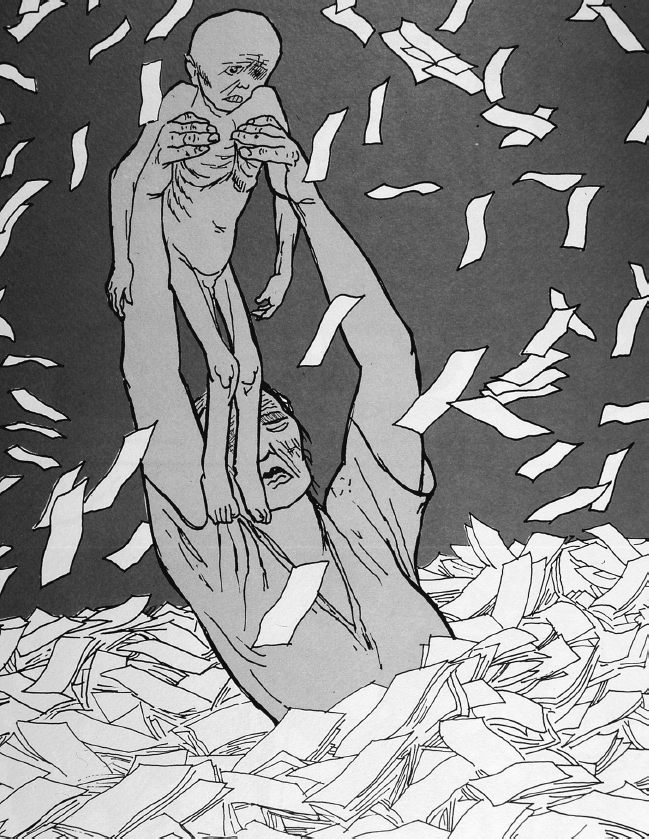Sources for Western Society: Printed Page 428
| 26-4 | | Postwar Economic Crisis in Germany |
| Hyperinflation in Germany (1923) |
The French occupation of the Ruhr in 1923 set off a chain of events that had cataclysmic consequences for the German economy. In response to the occupation, the German government ordered the people of the Ruhr to stop working. As the cost of supporting the striking workers and their employers mounted, the government began printing money to meet its obligations. The result was runaway inflation that obliterated the value of the German mark. This German cartoon from 1923 dramatized the impact of inflation on German families. In it, a mother holds up her starving child above a rising sea of bank notes, crying out for bread as she struggles to keep herself from being drowned in the accumulating piles of worthless money.

Universal History Archive / UIG / The Bridgeman Art Library.
READING QUESTIONS
Question
What does the cartoon suggest about the consequences of hyperinflation for ordinary Germans? What might explain the artist’s choice to use the metaphor of drowning to illustrate those consequences?
Question
How might the experience of hyperinflation have challenged the values and expectations of middle-class Germans?
Question
What connections can you make between hyperinflation and political developments in Germany in the 1920s and 1930s?